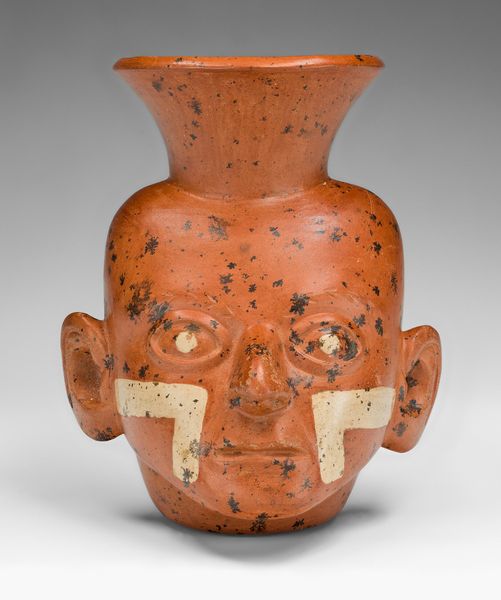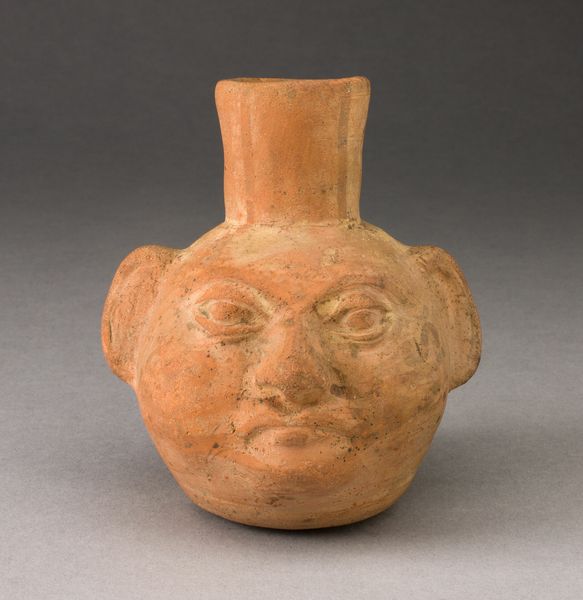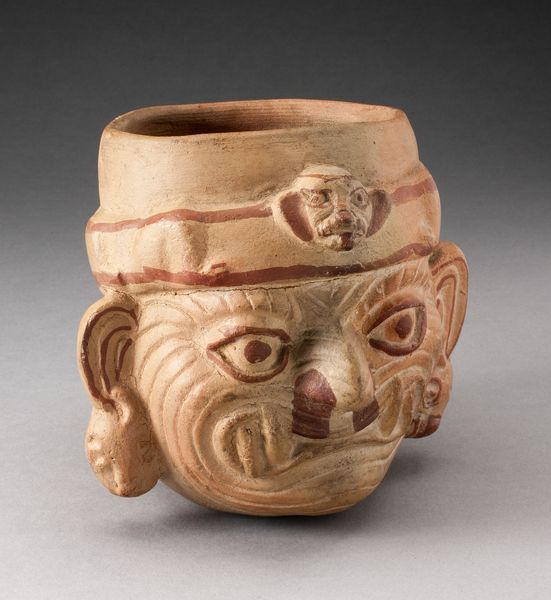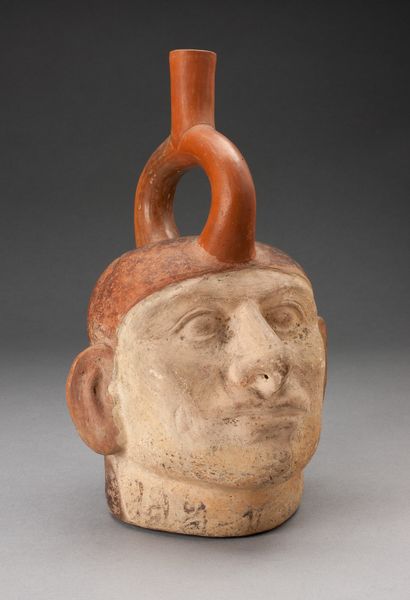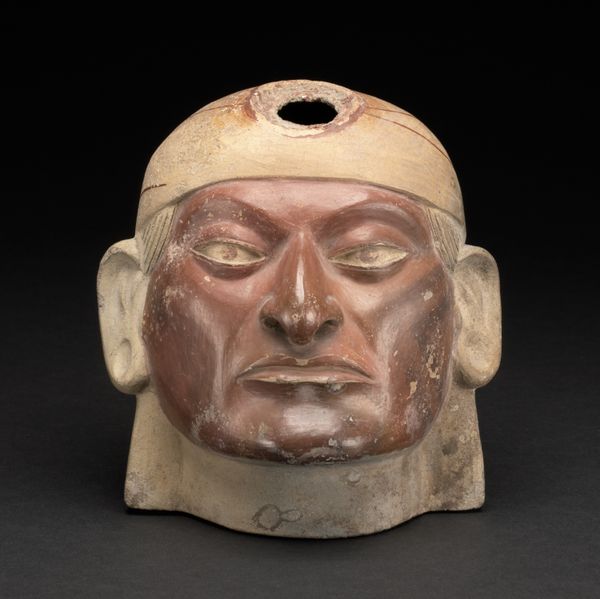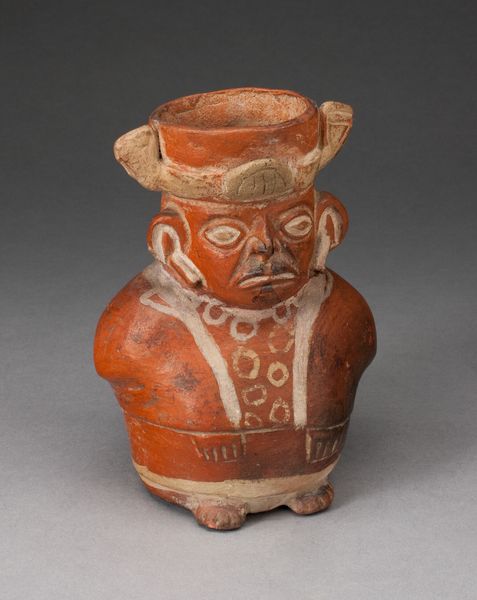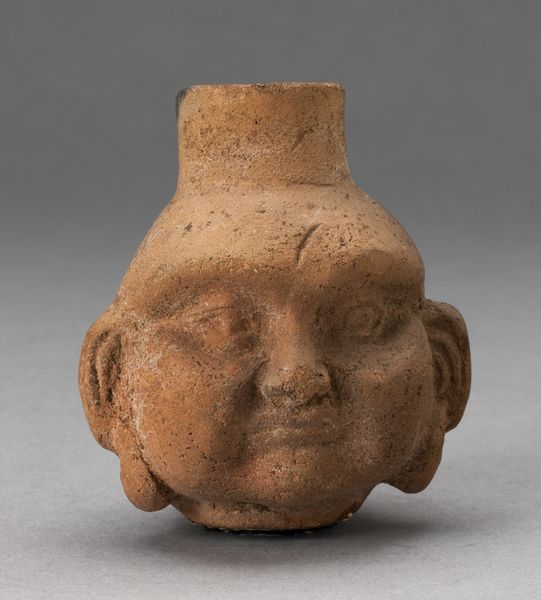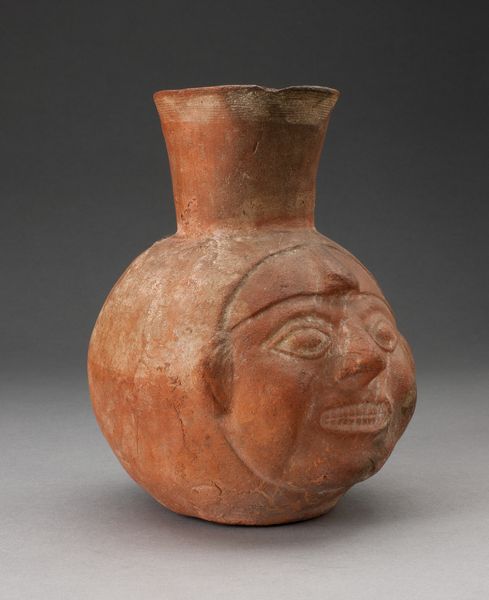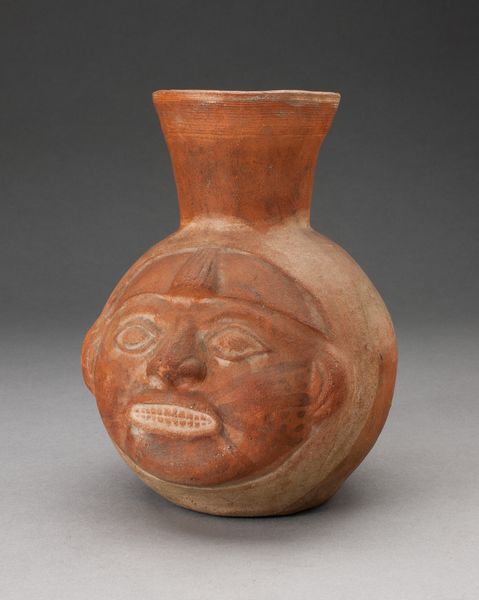
ceramic, earthenware, sculpture
#
portrait
#
ceramic
#
figuration
#
earthenware
#
sculpture
#
indigenous-americas
Dimensions: H. 15.2 cm (6 in.)
Copyright: Public Domain
Editor: We're looking at a ceramic portrait jar, "Portrait Jar of a Ruler Wearing Simple Headdress" from the Moche culture, dating roughly from 100 to 500 AD. The detail is striking. What kind of insights can you offer on its significance? Curator: Well, the Moche were fascinating because they left no written records, so these portrait vessels offer a powerful, albeit mediated, glimpse into their social hierarchy. We're looking at a potential ruler here. Notice the headdress; it suggests status. What’s interesting is the "jar" element itself – it suggests utility. This wasn't just an aesthetic object. It had a purpose, likely ceremonial. Editor: So, the practical object also conveys status. Were these vessels only depicting rulers? Curator: Not exclusively, but elites were certainly common subjects. Consider where these were found: often in elite burials. They were offerings, or perhaps intended to contain offerings, for the deceased. These works weren't ‘art for art’s sake’; they were enmeshed within complex political and spiritual beliefs. The way the vessel naturalizes a specific leader becomes an important element to explore for understanding their society. Editor: It’s amazing to consider that this piece might give a more intimate portrait of the leader than official written history ever could. Are there contemporary debates about the interpretation of these objects and the culture they represent? Curator: Absolutely. The Moche are frequently viewed through the lens of archaeological findings. We grapple with the coloniality of knowledge production, asking whose perspectives shape our understanding of pre-Columbian cultures. Even naming the objects imposes our worldview onto them. The portrait jar becomes not just a container but a focal point for understanding power, representation, and cultural preservation in museums. Editor: This has really highlighted the complexities of understanding cultures that existed so long ago. Curator: And hopefully illustrated the active role these objects play in present day political discourse.
Comments
No comments
Be the first to comment and join the conversation on the ultimate creative platform.

